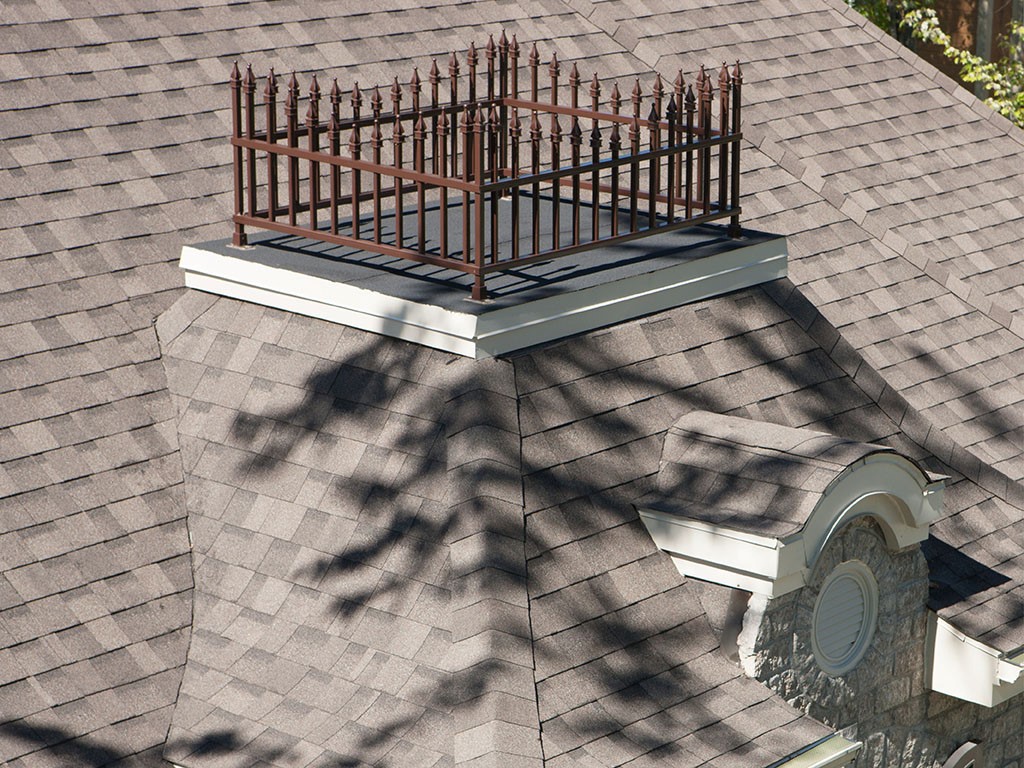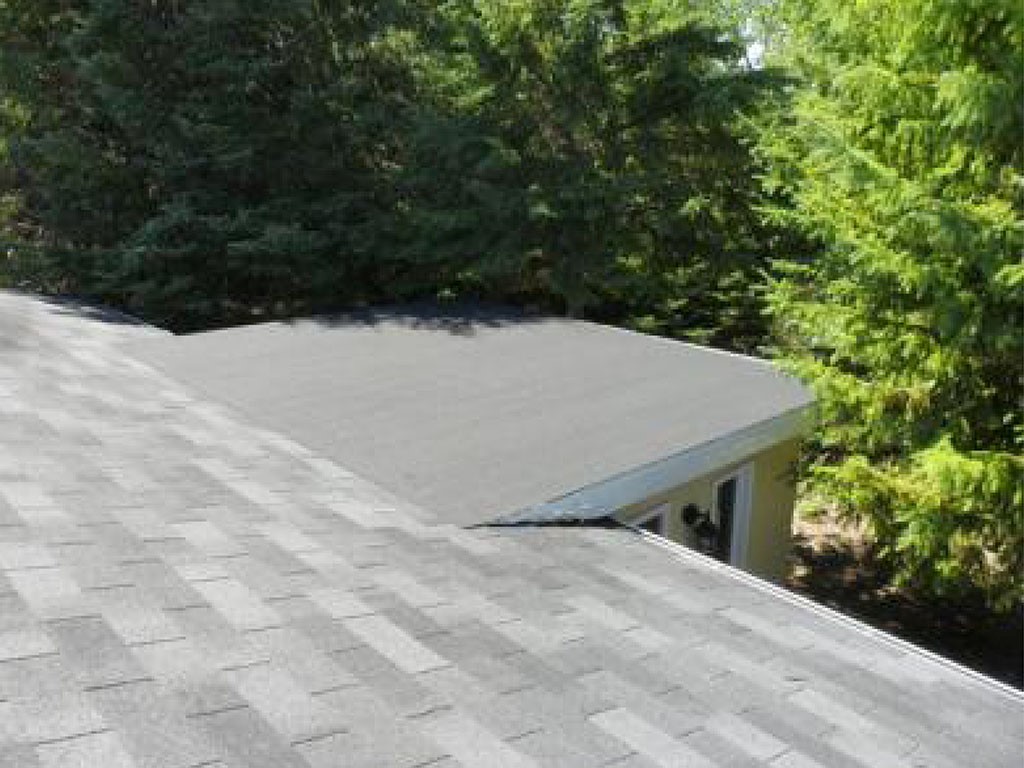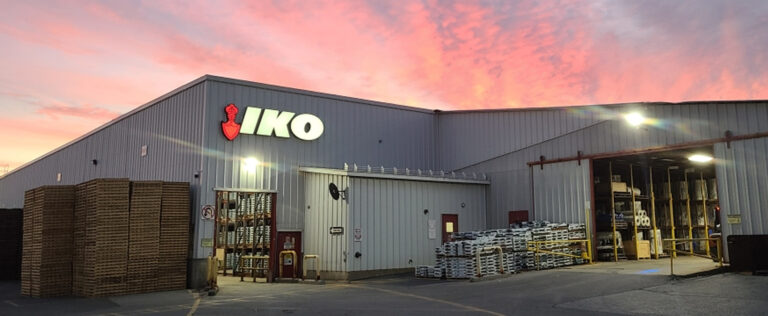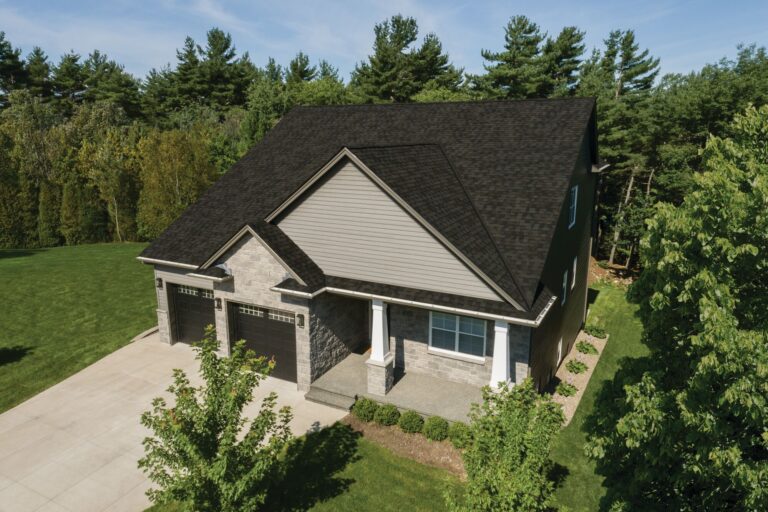How to Join a Flat Roof to a Shingle Roof
Table of Contents
- What Happens if a Roofer Connects a Flat Roof to a Shingle Roof Poorly?
- Can’t the Flat Roof Have Shingles?
- How to Make the Flat Roof to Pitched Roof Transition
- Should I Add Metal Flashing?
- What If I’m Installing a Flat Roof Transitioning to a Pitched Roof?
- What Kind of Drainage Should My New Roof Have?
- Ventilation and Insulation
- What About Color?
- Need Help Adding a Flat Roof to Your Home?
Flat roofs are in style in the residential roofing world. You will find flat roofs on tiny homes built in urban centers and on rural off-grid homes. Flat roofs are also a popular option for home additions, new porches, garages and garden features such as pergolas and gazebos. Increasingly, homeowners are adding flat roofs to their existing pitched roof in order to accommodate these great features. However, when you add a flat roof and tie it into existing roof shingles, you will face some challenges.
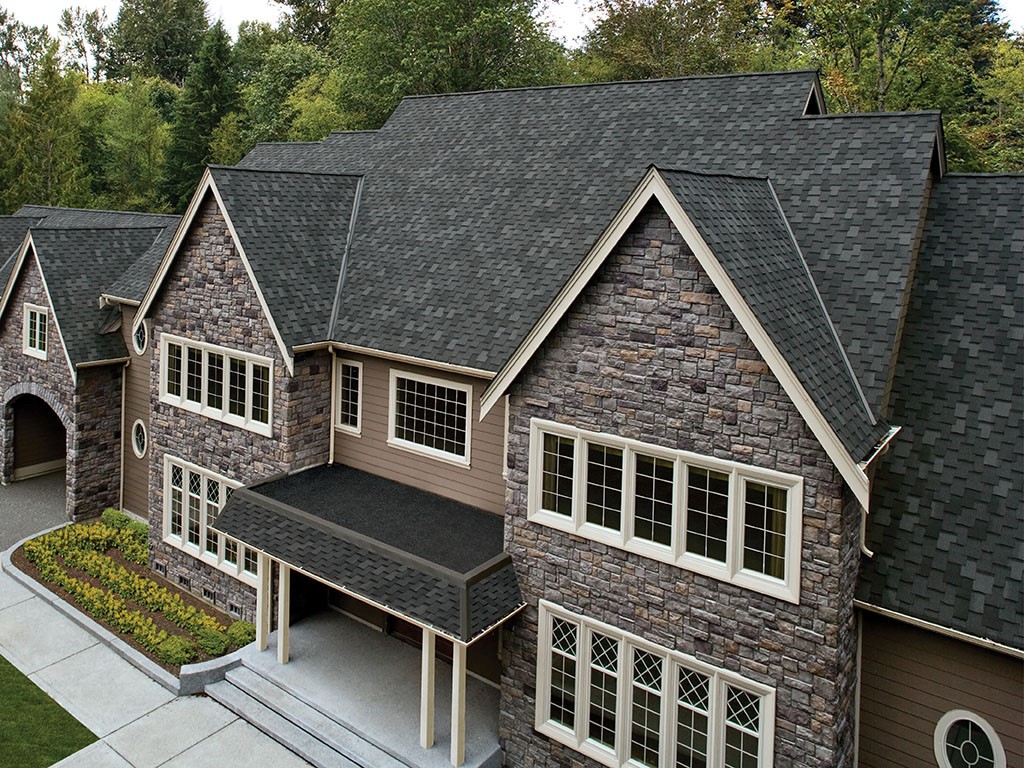
Much like a roof valley, the spot where a the flat roof meets a pitched roof is more vulnerable than other parts of the roof. Roofers must take a lot of care during installation to prevent leaks in this area and to allow for proper water drainage. We’ll explain why the shingle to flat roof transition needs special attention, and how your roofer can connect a flat roof and shingle roof properly.
What Happens if a Roofer Connects a Flat Roof to a Shingle Roof Poorly?
Essentially the problem stems from the change of pitch. Water moves faster down steeper surfaces than flatter surfaces. So, as fast-moving water runs from the shingle roof onto the flat roof, it slows down. This increases the potential for ponding water and leaks. If the flat roof covers an unheated area, it also adds additional risk for ice dams, which may also cause leaks.
While roofers successfully connect flat and pitched roofs all the time, they must be careful to create a smooth transition between the two surfaces. A very simple mistake a roofer could make is installing the flat roof materials on top of the shingles. While this might look waterproof to the untrained eye, it presents a serious problem. As water rolls down the shingle roof it will meet a lip where the flat roofing begins. The lip slows down water and holds some of it back, which can cause leaks. Further, if this spot never dries, the standing water will erode it over time, leading to early replacement of the roofing materials.
Further, flat roofs typically require replacement before shingle roofs. So, you will likely need to replace your flat roof at least once in the life of your shingle roof. Your roofer will have to remove some of the shingle roof to allow the new flat roof to be nested beneath it, or the likely result will be the problems listed above.
Other possible problems may result if the flat roof doesn’t have proper drainage, or ventilation (if it covers an enclosed space).
Can’t the Flat Roof Have Shingles?
Why not just install shingles on the flat roof? It’s true that flat roofs aren’t exactly flat, they have a small pitch of a few degrees. Still, you cannot put shingles on a flat roof as water does not drain off them quickly enough. The absolute minimum slope for asphalt shingle installation is 2:12.
How to Make the Flat Roof to Pitched Roof Transition
This job is best left to a professional roofer, of course. However, as the homeowner you may be curious about how your roofer should be tying in your two roof planes. Also, it is wise to be knowledgeable about how a flat roof and shingle roof should be attached, so that you can ask your roofer the right questions and get the best results for your roof.
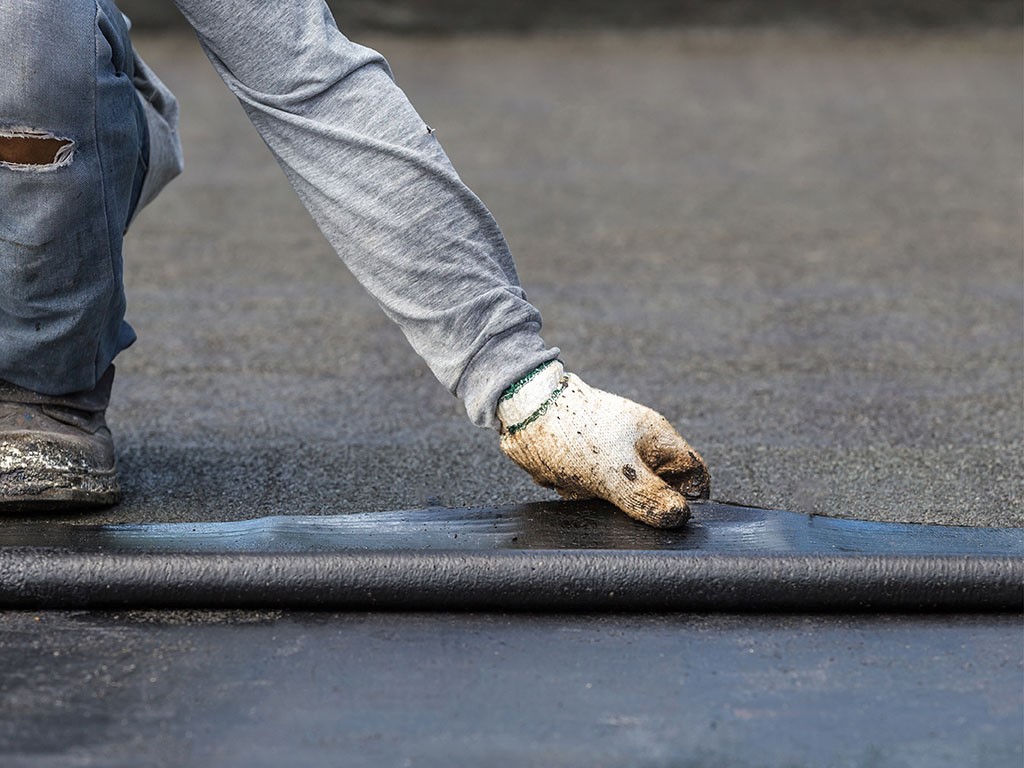
So, here’s what you need to know about how to tie into existing roof shingles with your new flat roof.
- Remove Some Roof Shingles: If your pitched roof is already installed, your roofers will need to remove two or more courses of shingles from the pitched roof and reinstall them after the membrane that ties the surfaces together has been laid down. If your roofer is installing the flat roof and pitched roof at the same time, it is usually prudent to work on the flat roof before the shingle roof.
- Start the Flat Roof Install: Depending on the kind of flat roof your roofers have chosen; they may need to begin the flat roof installation to create a base for the membrane that will connect the two planes.
- Select Your Membrane: In order to bridge the gap between the two surfaces, your roofers should install a roofing membrane. Acceptable membranes include a granulated roof membrane intended for commercial flat roofs, or an ice and water protector membrane such as ArmourGardTM. Ice and water membranes are already a requirement for residential pitched roofs in most cold areas, so they are a natural choice. The membrane that bridges the gap between the two roof planes should extend from the flat roof a few feet up the pitched roof (beneath the shingles).
- Determine Membrane Length: Exactly how far should the membrane extend up the pitched roof? First, check your local building codes to see if they have any requirements for the length of the membrane. If they do not offer any guidance, three feet is likely adequate. However, in areas with significant snowfall, snow will gather on the flat roof, and lean against the pitched roof. The membrane should extend (on the pitched roof) above the maximum height that snow can gather on the flat roof. That way, the roof has additional protection from snow, limiting the potential for leaks.
- Complete the Flat Roof: Depending on your flat roof system, the flat portion may now be complete. If not, it must be finished before your roofers move on to reinstalling the shingles. For example, if you have chosen to use ArmourGardTM, you will need to apply a cap sheet over it. One option is IKO’s Roof-Fast Cap, a self-adhering membrane intended for low-slope or flat residential roofs.
- Install the Shingles: The shingles should be installed so that they do not touch the flat portion of the roof. Now, the roof should be layered such that rainwater is always running downhill to the drainage system, with nothing in its way.
Should I Add Metal Flashing?
Some professional roofers add a thin piece of metal flashing to the flat roof to pitched roof transition. In most cases, this is acceptable (although, usually not necessary.) Potentially, there is risk for ice to form on the flat roof and creep up beneath the metal flashing. Such ice penetration beneath the flashing may increase your odds of a leak.
What If I’m installing a Flat Roof Transitioning to a Pitched Roof?
While it is uncommon to have a flat roof home that transitions to a smaller pitched roof, they do exist. These roofs may look like Mansard roofs, but with a completely flat top.
The transition from a flat to a sloped roof is just as vulnerable as when they are reversed. Installing a new pitched roof to your flat roof will require a bridging membrane, just as we discussed above. Also, when installing this roof transition, it is more likely that your roofers will choose to add metal flashing to the joint between the roofs.
Flat roofs do not drain water as quickly as sloped roofs, so water will drain more slowly in this transition than the reversed roof planes. Metal flashing is a wise way to protect the rest of the roof from slow-draining water.
What Kind of Drainage Should My New Roof Have?
When your roofer is planning out how to tie in a flat roof to a shingle roof, they will also have to choose between an external and internal drainage system. Most pitched roofs have external drainage, or a gutter system. Flat roofs may have external or internal drainage.
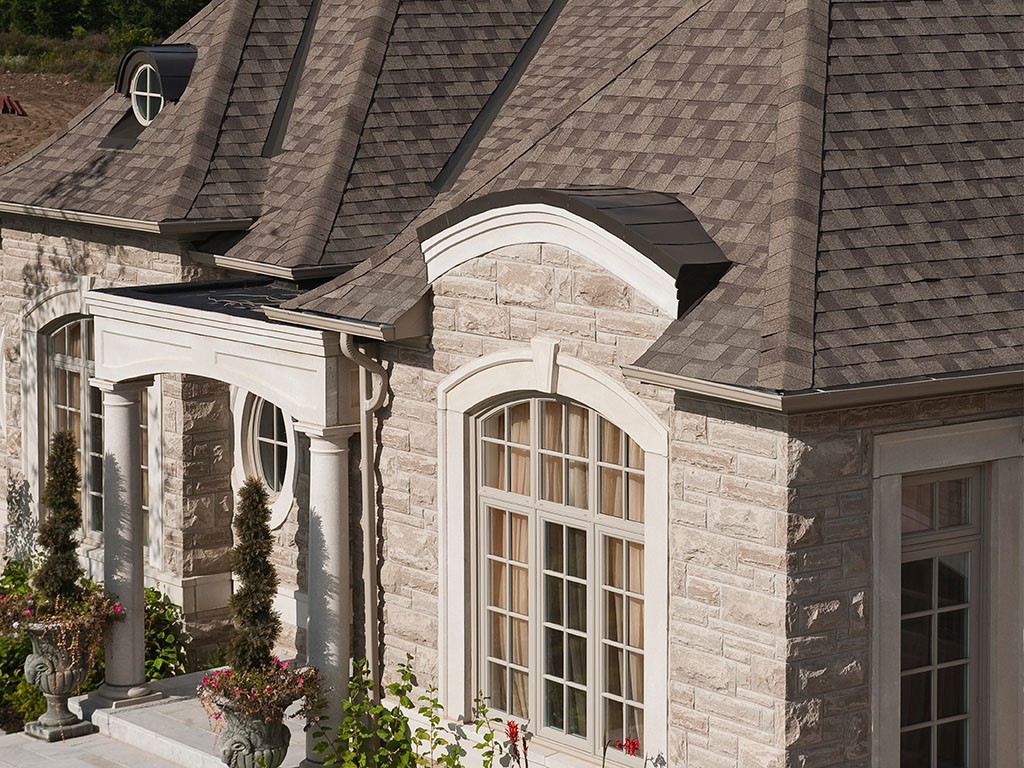
So, when you are combining these two types of roofs, what kind of drainage should you choose? It will depend on your specific roof, and factors such as the size of the flat roof, whether it is above a heated or unheated space, and more. It’s best to work with a professional roofer to get the right solution for your roof.
That said, here are some things to consider when discussing drainage options with your roofer:
- Potential for freezing: Internal and external gutters have the potential to freeze if there is water in them during below-freezing temperatures. However, when internal systems freeze, they can cause damage to the building and can be more expensive to replace. Although, there are preventative steps you can take to reduce the likelihood that the internal drainage system will freeze, such as installing thermostatically controlled electric heat cables.
- Volume of water: Large flat roofs that handle a great deal of water may need siphonic drainage systems, which are internal systems. While siphonic drains are typically seen in commercial roof drainage systems, it is possible that a large residential flat roof may benefit from them as well.
- Aesthetics: Choosing internal drainage can help keep the property beautiful, as they are hidden inside the walls of the building and not distracting like gutter systems. However, most homes have gutter systems, so homeowners may accept the look of gutters on their new flat roof.
Ventilation and Insulation
If the flat roof is sitting on top of an enclosed area, such as a home addition or garage, it will need insulation, just as with any roof above a residential home.
What About Color?
Homeowners are often concerned whether the color of their flat roof can match their shingles. Of course, you want your home to look good and retain its curb appeal and matching roofing materials is key to both of these goals. The good news is that IKO’s residential low slope Roof-Fast Cap membranes are available in colors that match select IKO asphalt shingles. So, your flat and pitched roofs can match each other.
Need Help Adding a Flat Roof to Your Home?
When you choose a roofer to work on your flat roof to pitched roof transition, choose one that has experience with both types of roofing. With an understanding of both systems, they can do a better job of predicting and resolving any issues your specific roof may develop. You can find local roofing contractors through IKO’s Contractor Locator.
